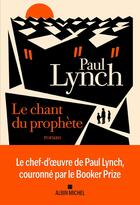-
Date de parution : 12/08/1998
-
Editeur :
Phaidon Press
-
EAN : 9780714827605
-
Série :
(-)
-
Support :
Papier
Résumé:
The paintings of the Belgian Surrealist René Magritte (1898-1967) have exerted an extraordinary fascination, particularly since the enormous increase in awareness and popularity of his work during the 1960s. Magritte shows us a world of silence and isolation in which familiar objects are altered... Voir plus
The paintings of the Belgian Surrealist René Magritte (1898-1967) have exerted an extraordinary fascination, particularly since the enormous increase in awareness and popularity of his work during the 1960s. Magritte shows us a world of silence and isolation in which familiar objects are altered or juxtaposed in 'impossible' combinations in order to create a sense of disorientation and the absurd. Many of his most memorable paintings date from his three prolific years 1927-30, when he lived near Paris and was in close touch with the writer André Breton and other French Surrealists. In his pre-war painting, stylistic concerns were of secondary importance to Magritte, and for the most part he concentrated on the relation between objects and words or between the image of an object and the object itself. He deliberately cultivated a cold, unemotive, 'style-less' style. This quality renders the violence and macabre sexuality of some of his works all the more disturbing. His own 'impressionist' and critics keenly responsive to the later work of other masters of parody and allusion such as Picabia and de Chirico.
Donner votre avis















